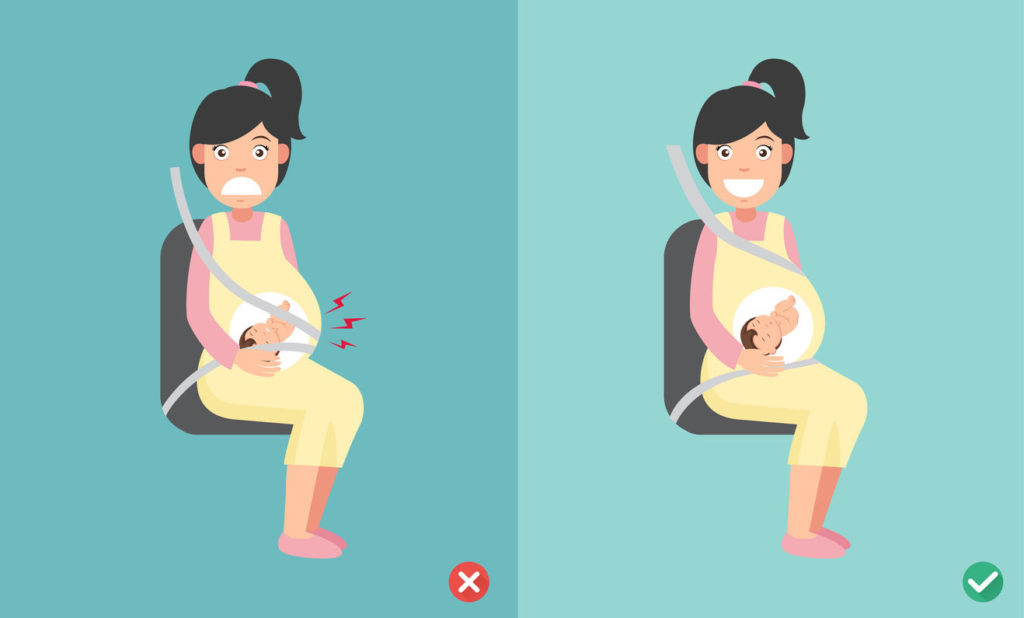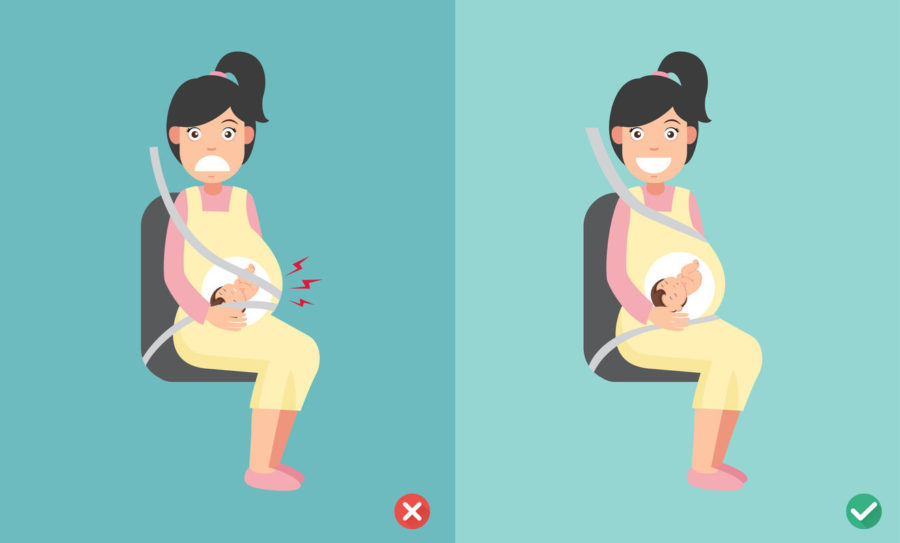Driving while pregnant presents women with many challenges. Nausea, stiff joints, a growing abdomen, a seemingly shrunken bladder…the list sometimes seems endless. But a seatbelt is necessary. According to a 2012 article published in the American Journal of Lifestyle Medicine, motor vehicle accidents injure about 92,000 pregnant women every year in the US. So, should you stop driving?

Do I have to stop driving while I’m expecting?
No, says Amie Durocher, the creative director of Safe Ride 4 Kids and a certified CPS tech. However, she cautions that women should know that just being pregnant can increase injury to both mother and fetus in a crash.
Ask yourself this: Are you physically and mentally able to drive? For example, one mom posting on babycenter.ca said this on a thread about driving while pregnant: “I’m vertically challenged (only 5-ft tall). I stopped driving when my belly was already touching the steering wheel because I don’t want to take a chance in case I get into an accident and the airbags deploy.”
The other moms who chimed in said they drove, though. Some even thought it was “so passé” that anyone would suggest they can’t drive. At the same time, if you’re really tired because of your pregnancy, then don’t drive.
What’s the proper way to wear a seatbelt?
According to the UK Department for Transport and the US National Highway Traffic Safety Administration, there is one correct way to wear a seatbelt. The shoulder strap must pass between the breasts and the lap strap must cross the hips, underneath the abdomen.
The Ministry of Transportation of Ontario says, “Wear your seatbelt so that it crosses your chest and your lower hips – these areas of the body are better able to resist the force of a crash.” For expecting moms, it gives the following instructions:
- Wear both the lap and shoulder belts.
- Sit as upright as possible.
- Wear the lap belt so it “pulls downward on your pelvic bones and not across your abdomen.”
A 2017 study found that, out of 1,931 expectant mothers, only 83 wore their seatbelt correctly. These moms probably wanted the seatbelt to sit more comfortably around their abdomens. However, improper wear does put your fetus at higher risk for injury and even death. A few years ago, a new product called Tummy Shield came on the market. Safe Ride 4 Kids endorses it. It pulls the lap portion safely away from the abdomen. The device may help you, but talk to your doctor to make sure it’s safe.
Any tips for driving with my other children?

If you’re concerned about driving with younger children in the vehicle, you’re not alone. Many women find movement increasingly difficult as their baby inside grows and begins pushing against organs (or beating them up). You may even find it increasingly hard to get out of the vehicle as your pregnancy progresses. Add to that the energy of a toddler or pre-schooler, and traveling with young kids can become more stressful.
Remind your kids before you stop the car to wait until you say they can exit. If they’re properly buckled in a car seat, you’ll have less to worry about. As with any situation in parenting, do your best to plan ahead, have toys in the car that are safe for travel, and pack healthy snacks your children enjoy.
When it comes down to it, driving while pregnant will likely present problems and, like many other daily activities, require some adjustment. Keep safety at the top of your priority list as you find ways to make it work, but there’s no reason (unless advised by your doctor or your own better judgment) that you can’t drive throughout your pregnancy.


